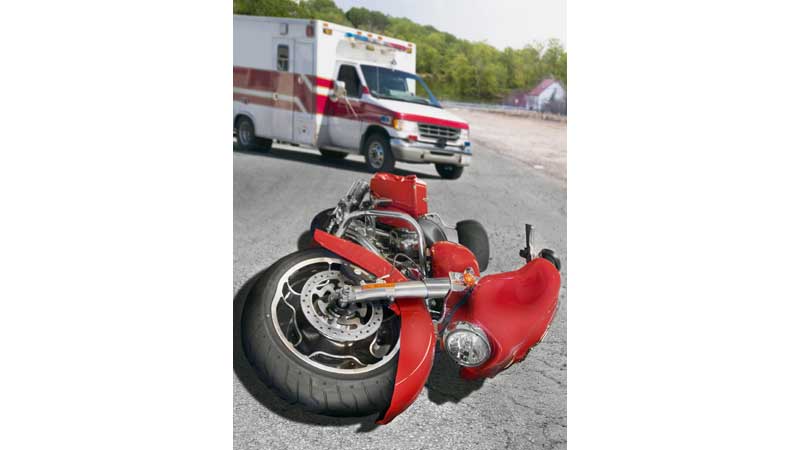Motorcycle fatalities rising concern in Virginia
Published 12:46 pm Friday, May 14, 2021

- In Virginia, there were 92 motorcycle fatalities on the roads in 2020 with 1,769 riders injured, according to the Department of Motor Vehicles.
|
Getting your Trinity Audio player ready...
|
May is Motorcycle Safety Awareness Month, a reminder to motorists to share the road.
Motorcyclists are considered vulnerable road users because of the lack of protection that they have between themselves and a vehicle collision. According to NHTSA (National Highway Traffic Safety Administration), motorcycle riders are 27 times as likely to be killed in a vehicle crash than a passenger in a vehicle. In Virginia, there were 92 motorcycle fatalities on the roads in 2020 with 1,769 riders injured, according to the Department of Motor Vehicles. There was a 9.6% increase in motorcycle fatalities from 2019 to 2020. Just four months into 2021, 12 motorcyclists have died and 201 were injured so far, with the most popular months for bikers yet to come.
In 2018, NHTSA reported 4,985 motorcycle fatalities, and more than 28% of the motorcycle riders involved in fatal crashes were riding without a valid motorcycle license.
In Virginia, drivers seeking to be licensed to drive a motorcycle endorsement have the option to take a 16-hour Virginia Rider Training Program course (motorcycle safety course) or pass a knowledge and road skills test conducted by the DMV. Taking the motorcycle safety course is a huge benefit to bikers seeking to extend their ride and stay alive.
“We are all one community on the road, and we need to look out for one another,” said Holly Dalby, director of public affairs for AAA Tidewater Virginia. “During the pandemic, many of us drove far less than in a typical year, and as we return to the road, our driving skills may be a little rusty. AAA encourages everyone on the road to keep their speeds down, cut out distractions, use their signals early and often, and double- even triple-check for motorcyclists when changing lanes.”
“Safety is important every day we ride, and Motorcycle Safety Awareness Month is a great time to emphasize our safety messages to drivers and riders alike,” said Erik Pritchard, president and CEO of the Motorcycle Safety Foundation. “As we look forward to peak riding season, we welcome the opportunity to kick off a summer of safety in May. And remember, for those looking to get into riding, your best first ride is with a Motorcycle Safety Foundation course, on the street or on the dirt.”
The Motorcycle Safety Foundation offers these top five tips to drivers:
• Take an extra moment to look for motorcycles. Because of its small size, a motorcycle can be easily hidden in a car’s blind spots, so check — then check again — before changing lanes or making a turn.
• Predict a motorcycle is closer than it looks. A motorcycle may look farther away than it is because of its small size, and it may be difficult to judge a motorcycle’s speed. When checking traffic to turn at an intersection or into (or out of) a driveway, predict a motorcycle is closer than it appears.
• Keep a safe distance. Motorcyclists often slow by rolling off the throttle or downshifting, thus not activating the brake light, so allow more following distance, about 3 to 4 seconds.
• Understand lane shifting. Motorcyclists often adjust position within a lane to be seen more easily and to minimize effects of road debris, passing vehicles and wind. Understand that motorcyclists adjust lane position for a purpose, not to show off or to allow you to share the lane with them.
• See the person. When a motorcycle is in motion, see more than the motorcycle, see the person under the helmet, who could be your friend, neighbor, or relative.
And top five tips for riders:
• Be visible. Motorists often have trouble seeing motorcycles, so wear bright clothing and a light-colored helmet. Always have your headlight on, day and night, and avoid riding in blind spots of cars and trucks. If possible, flash your brake light when slowing down and before stopping.
• But pretend you are invisible. If you assume others on the road can’t see you, and any car that can hit you will hit you, you will tend to ride in a hyper-aware mindset and learn to notice every detail in your surroundings. Take extra responsibility for your safety and ride defensively.
• Gear up every ride. Wear proper riding gear from head to toe. Full-face helmets provide the best protection, and jackets, pants, gloves, and boots that are made for riding will generally be made of abrasion-resistant material and provide additional comfort and protection around joints and other areas.
• Use good street strategies. Constantly search the road for changing conditions and use the Search-Evaluate-Execute strategy (SEE) to assess and respond to hazards before you have to react to an emergency.
• Before you ride, check over your bike. Make a habit of doing a pre-ride check, which includes looking over your tires and wheels, checking fluids, cables, your bike’s chassis, lights and electronics and the stands.





